




















A historical retrospective on the first 50 years of the American Network of Community Options & Resources
Published 2021






















A historical retrospective on the first 50 years of the American Network of Community Options & Resources
Published 2021
A2012 article in the Harvard Business Review states eloquently the importance of an organization’s history to its present leadership and future success. “A sophisticated understanding of the past is one of the most powerful tools we have for shaping the future,” argue John T. Seaman, Jr., and George David Smith. They remind us that “history can be used to put adversity in context and to help heal rifts,” and that knowing the history of the enterprise “can instill a sense of identity and purpose.”
Although we discovered Seaman & Smith’s insights long after we set out to narrate ANCOR’s history, these are the very reasons we embarked on this journey in the first place.
We wanted to craft a historical retrospective that celebrates our accomplishments and honors the contributions of the many who brought those accomplishments to fruition. At the same time, we wanted to imagine all that will be possible in the next 50 years. We sought at once to take stock of how the past led us to this current moment and to outline an ambitious path forward for the years to come. We believed that imagining our past in the present moment could propel us toward a more imaginative future—a future in which the inclusion of all people knows no bounds.
This document is the result of our imagination.
For more than 50 years now, ANCOR has been working to ensure that people with intellectual and developmental disabilities have the options and resources they need to make choices about their lives. Those choices—about where to live, whom to live with, where to work, who to spend time with, how to spend their time
and so much more—are central to their identities. But making and carrying out those choices often requires support from community providers.
That’s why supporting providers is so central to ANCOR’s own identity. In 2014, I became only the fourth chief executive to lead this community of providers, following in the footsteps of Manny Hall, Joni Fritz and Renee Pietrangelo. When I became CEO, I did so with a promise: to support the providers who make it possible for our nation to be defined by the inclusiveness of its communities.
We’re not there yet, but we’ve come a long way. The distance we’ve traveled has only ever been because of you.
If you’re reading this retrospective on ANCOR’s history, you’re one of thousands of leaders who have shaped our trajectory along the way. Perhaps you’re a member or a partner. Perhaps you’re an enthusiastic supporter of our work. Maybe you’ve been part of ANCOR since its inception, or maybe you’re new to our family. Either way, you are central to our story—to our very identity—and this document is as much a testament to you as it is a celebration of our past.
In that Harvard Business Review article, Seaman and Smith maintain that “one use of organizational history…is simply to remind people ‘who we are.’” From this wisdom, I am reminded that we are who we are because you are who you are—and that makes me so grateful to walk the path through this era of ANCOR’s history with you by our side.



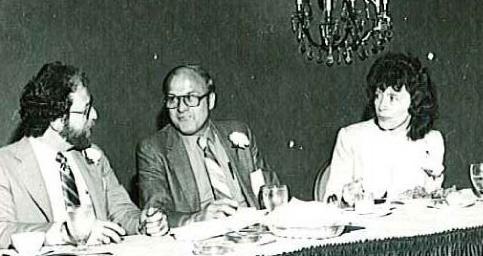

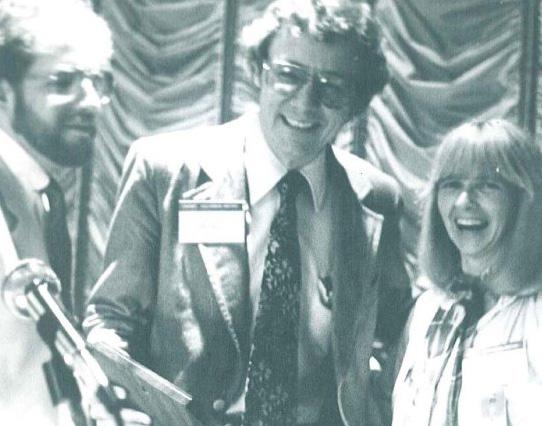


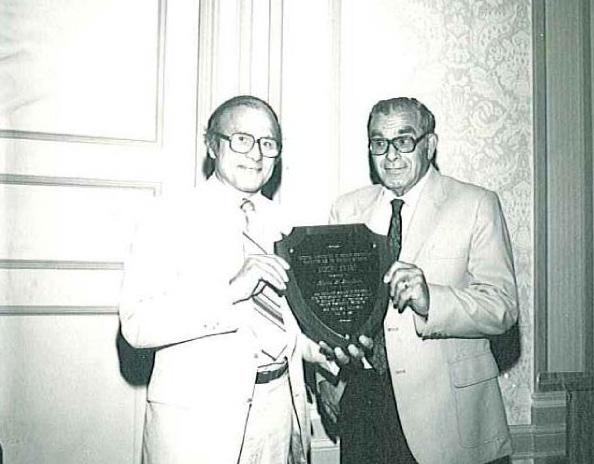





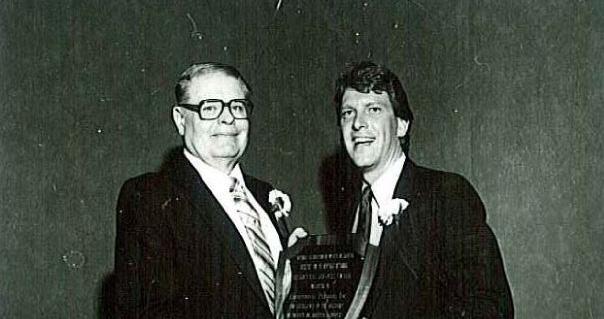

Although the organization now known as the American Network of Community Options and Resources was founded in 1970, an understanding of its history demands that we go back a little further in time to the mid-1960s.
Established as a partnership between states and the federal government, the Medicaid program began in 1965 to support a range of people who had traditionally lacked access to health care. But while many in mainstream society think of Medicaid as a federal health care program for low-income Americans— something of a Medicare for the poor—the precursor to the program was predominantly focused on the “aged medically indigent.” Support for “the blind [and] the permanently and totally disabled” came when Medicaid was passed as part of Title XIX of the Social Security Act.
What made the early successes of the Medicaid program possible was the emergence of a parallel movement against the institutionalization of people with I/DD. Since at least the latter half of the century prior to Medicaid’s establishment, people with I/DD—though not understood at the time in those terms—were most often warehoused in large, state-run institutions.
Far away from their families and isolated from the rest of society, the people living in institutions often found themselves stripped of even their most basic rights. In many places, conditions were notoriously squalid, garnering mainstream attention through exposés such as the one by Geraldo Rivera in 1972 on the Willowbrook State School on Staten Island in New York.
Institutionalization was, in a word, dehumanizing.
It was within this context that the movement toward deinstitutionalization began to take hold, and if the 1960s were like the striking of a match, the 1970s spelled the uncontrollable spread of wildfire. People with disabilities, their family members, social workers and legal services advocates, and a range of other champions for the rights of people with disabilities began to speak out. Now-renowned activists like Judy Heumann and Ed Roberts lent their voices to the cause, amplifying calls for community practice and public policy to dismantle the structures that kept human beings warehoused in state-run institutions.
In turn, the 1970s ushered in an era of rapidly changing legal and regulatory structures that affirmed—sometimes for the first time—the civil and human rights of people with disabilities. Important groundwork was laid in 1970, when the Developmental Disabilities Services and Facilities Construction Amendments were enacted. These Amendments contained the first legal definition of developmental disabilities, paving the way for future efforts to codify the rights of people with developmental disabilities.
One such effort came in 1973 in the form of Section 504 of the Rehabilitation Act, which barred discrimination against people with disabilities participating in federally funded programs. Then, in 1974, the Supreme Court’s decision in Halderman v. Pennhurst upheld the right of people with disabilities to access community services while drawing attention to sometimes horrific conditions in so-called “state schools.”
It’s no coincidence, then, that the beginning of the 1970s gave birth to another important milestone in the movement toward community living: the founding of ANCOR. For at least a few years by that point, the chief executives from a number of private agencies that supported people with I/DD gathered together at the annual conference of the organization now known as AAIDD, the American Association on Intellectual and Developmental Disabilities.
Recognizing the need for a voice dedicated to translating research into practice so providers could more effectively support people with I/DD, these early pioneers founded ANCOR, which was officially incorporated on September 18, 1970, as the National Association of Private Residential Facilities for the Mentally Retarded.1
For its first several years, ANCOR leaders worked with leadership from AAIDD to contribute sessions and trainings to its annual conference specifically tailored toward operators of private residential facilities. This programming would later comprise a dedicated division of the annual AAIDD event, the Division on Community and Residential Services, and ANCOR would serve as a co-host for the AAIDD conference. Eventually, ANCOR spun off its own annual gathering; today, the ANCOR Annual Conference sees upwards of 600 participants each year.
Although it would eventually transform into the nonprofit industry association it is today, ANCOR was actually established first as a 501(c)(3) nonprofit educational organization, designed to build the capacity of operators of community-based residential facilities to care for people with significant developmental disabilities. ANCOR’s transformation into a proper industry association was
made possible thanks in large part to the securing of grant funding that helped make the young organization more sustainable.
Of course, this evolution also required a reconfiguration of how the organization governed itself. As just one example, ANCOR came to be governed by a Board of Directors composed of nearly 75 members—an unwieldy structure that goes to show that we haven’t always gotten things right on the first try. As it grew into a true trade association, the organization changed its nonprofit tax status and, eventually, the composition of its Board; now a 501(c)(6), ANCOR is today led by a Board of Directors numbering in the teens.
Manford “Manny” Hall was ANCOR’s first paid staff executive, while Albert Schmickel—then-Director of the Stonegate School in Connecticut—was the first President of ANCOR’s Board of Directors. Together, Manny and Albert negotiated with Elliot Richardson, then-Secretary of the U.S. Department of Health, Education & Welfare (now the U.S. Department of Health & Human Services), to secure one of ANCOR’s first major accomplishments: grant funding to identify all out-of-home living arrangements in the United States. The research would eventually evolve into the annual “State of the States” report, a leading source of data in the national I/DD community.
In 1973, Manny and his assistant, Joni Fritz, would go on to collaborate with the U.S. Department of Labor’s Wage & Hour Division to understand deeply the wide array of regulations affecting staff in community living arrangements. In addition to becoming one of the nation’s leading experts on labor laws, Joni would also be named ANCOR’s second chief executive in 1975. By the time of her retirement at the turn of the century, she was advising ANCOR members daily on the enforcement of federal labor regulations.
1 Incorporated as the National Association of Private Residential Facilities for the Mentally Retarded, the organization now known as ANCOR was renamed as the National Association of Private Residential Resources and renamed again in 1993 as the American Network of Community Options and Resources. The remainder of this document refers to the organization by its current name, both to avoid the use of problematic language included in the association’s original name and to reflect the diversity of the services its members provide today.
ancor.org
ancor.org
From its earliest days, a key ingredient in ANCOR’s growth and influence has been its collaboration with a diverse range of coalition partners. In 1973, ANCOR became a founding member of the Consortium for Citizens with Disabilities, or CCD. Now composed of 116 leading disability advocacy organizations, CCD at its inception was a group of 18 organizations that came together to build consensus around a federal policy agenda to positively impact people with I/DD. Still today, ANCOR plays a leading role in CCD; over the years, we have continuously cochaired or participated in multiple CCD task forces.
That same year, ANCOR became a founding member of another important coalition: an organization now known as the Council on Quality & Leadership (CQL). ANCOR played a pivotal role in the development of CQL’s quality outcome measures and continues to influence the evolution of these measures through participation on CQL’s Board of Directors.
These early collaborations turned out to be trendsetters, as ANCOR and its members through the years have served in leadership roles in a number of state and national organizations, including The Arc of the United States, United Cerebral Palsy, Easterseals, CARF and the Council on Accreditation. They also led ANCOR to be invited as collaborators in a series of important advancements in the safety and well-being of people with I/DD. For example, in the late 1970s, ANCOR would play an instrumental role in the development of new, flexible life safety requirements targeted at small homes for people with disabilities, including a nationally recognized evaluation system presented to the National Fire Protection Association.
By the end of its first decade, ANCOR’s future as an influential force in Washington and in statehouses across the country was undeniable. A key collaborator, coalition partner and thought leader for state and national associations, lawmakers and
regulators, ANCOR emerged from the 1970s on a clear path to being a significant force in the disability community. But if the association’s first decade was about planting the seeds of a movement, its next two decades were about cultivating communities to grow that movement. In the next section, we explore how ANCOR evolved from an early pioneer in the I/DD community into a leading national influencer.



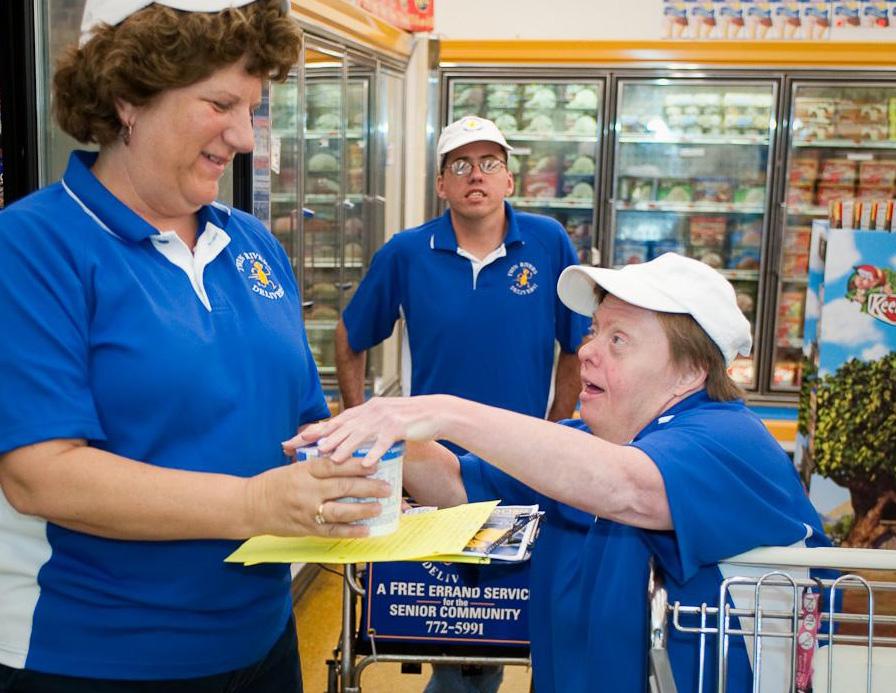
The start of ANCOR’s second decade looked quite different from the start of its first. Within the organization—which by 1980 was fully structured as a nonprofit trade association— the number of members continued to multiply. This expansion in size brought with it a growth mindset, with ANCOR’s leaders hyper-focused on the long-term sustainability of the network of providers that comprised its membership, as well as of the organization itself.
Change was afoot outside the association’s walls as well. At the federal level, the early 1980s brought the evolution and restructuring of several key federal agencies, which triggered new opportunities and new challenges for community providers to navigate. Meanwhile, community practice was evolving, bringing with it an entirely new set of aspirations, reflective of innovations in service delivery. A focus on self-determination expanded our focus—once narrowly fixated on giving people choices about where to live—to include supporting people to decide what they want their life to look like. This evolution demanded more robust engagement with and among self-advocates, who became strong voices for community-based services that place selfdetermination front and center.
As the service delivery landscape evolved, so too did ANCOR. But the corollary was also true: ANCOR’s growth and evolution contributed to innovations in the field. ANCOR became a national forum where providers could learn, debate and assess best practices in an environment defined by trust and mutual respect. Its leaders and the providers they represented became
an elemental force in shaping civil rights and civic engagement to ensure people of all abilities had the options and resources needed to be part of the community.
A few examples of how ANCOR exerted its influence are befitting. When it comes to civil rights, ANCOR locked arms with other disability advocacy organizations in 1982 in support of a rule issued by the U.S. Department of Health & Human Services prohibiting hospitals from denying treatment to newborns diagnosed with an intellectual or developmental disability. That same year, ANCOR applauded the Supreme Court’s decision in Youngberg v. Romeo, which upheld the right of institutionalized people to access medical care.
Additional civil rights victories were won the following year. In 1983, President Ronald Reagan and the United States Congress supported the United Nations’ declaration of the Decade of Disabled Persons; ANCOR was invited to the White House to celebrate the occasion. Later that year, ANCOR filed an amicus curiae brief in Cleburne Living Center, Inc. v. City of Cleburne, a pivotal Supreme Court case which ultimately invalidated local zoning laws in a small Texas town designed to prohibit group homes from establishing in local neighborhoods.
The 1980s also saw ANCOR play a significant role in the financing of community-based I/DD services. Authored by ANCOR members Bob Laux and Derrick Dufresne, The Use of Private Investment Sources to Create Residential Alternatives became one of ANCOR’s first major publications and helped providers
identify pathways to financing residential services. ANCOR’s expertise in that arena ultimately led the Health Care Financing Administration (which would later evolve into the Centers for Medicare & Medicaid Services) to engage the association in the development of rules and regulations surrounding Intermediate Care Facilities, or ICFs. Thanks in part to extensive input from ANCOR’s provider network, the ICF landscape we know today came to fruition, and many of those pioneering ICFs continue to be operated by ANCOR members.
The dawning of a new decade would also prove to be a touchstone in the broader disability rights movement, and once again, ANCOR was on the scene, delivering advocacy and testimony in support of people with I/DD and the providers on which they rely. In July 1990, President George H.W. Bush signed into law the Americans with Disabilities Act (ADA), landmark legislation that prohibits discrimination against people with disabilities and guarantees the accessibility of public spaces and services. In 1992, amendments to the Rehabilitation Act were infused with the philosophy of independent living. And, in 1998, the Supreme Court’s decision in Olmstead v. LC—to which ANCOR contributed by joining another amicus curiae brief—held that people with disabilities must be given access to services in the least isolating setting possible.
One of the essential ingredients for each of these major national expansions of the civil rights of people with disabilities was a growing community of providers, connected by their drive toward inclusion and working in concert to ensure the promises of these new and newly enforced laws would be carried out. But the growth of this community in terms of both size and complexity demanded further professionalization of the enterprise. As a result, the 1990s gave birth to many of the benefits that ANCOR members enjoy still today.
For instance, LINKS, ANCOR’s monthly newsletter now known as Connections, was joined by a new member resource called the Washington Insiders Club (WIC). Known today as Capitol Correspondence, WIC was a weekly news digest featuring the latest developments in Washington, plus analysis of policy proposals and key resources for community providers. By the late 1990s, WIC was distributed to member agencies and was a central focus of another exciting innovation: the 1998 launch of ANCOR’s home on this new thing called the World Wide Web.
By the end of the 1990s, signs of ANCOR’s growth were everywhere. Joni Fritz, who had served as ANCOR’s chief executive since the 1970s and who planned to retire by the end of the decade, had grown ANCOR’s staff to include a half-dozen professionals. ANCOR’s annual operating budget had expanded to $700,000, revenue for which was derived from 650+ duespaying members who together supported more than 150,000 people with I/DD.
With an expanded reach and three decades of experience as the leading voice for providers in Washington, there was no telling what the new millennium would bring.

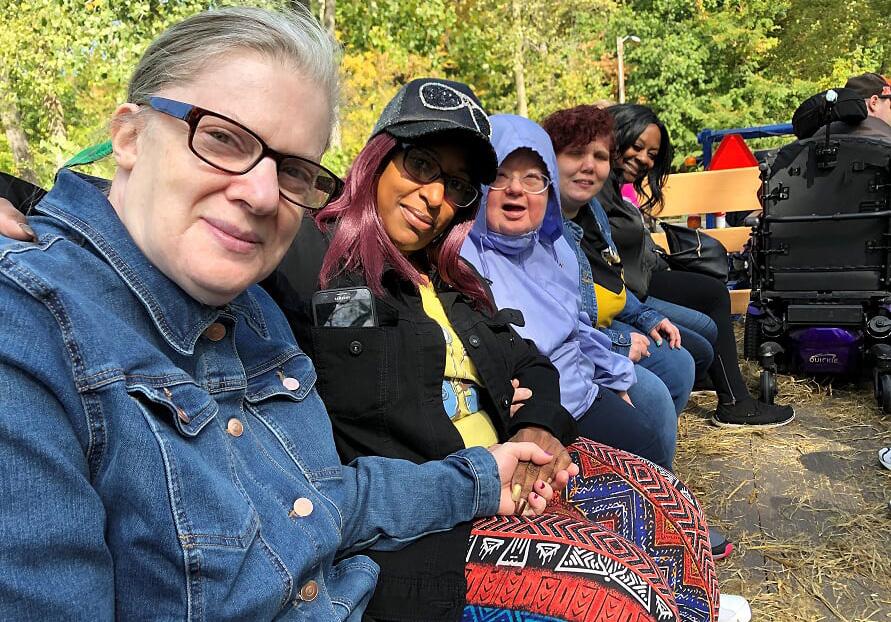
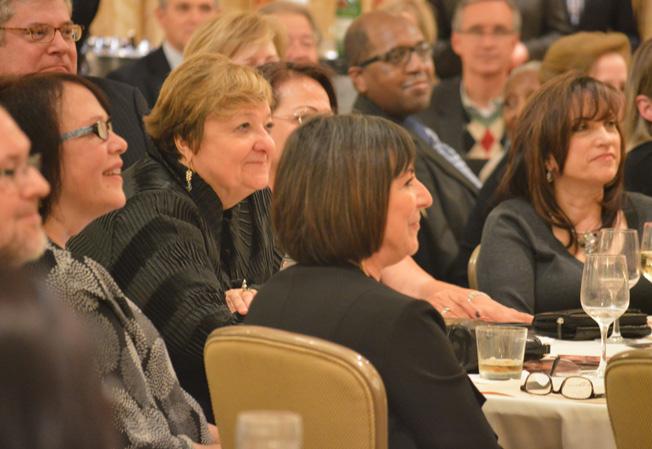

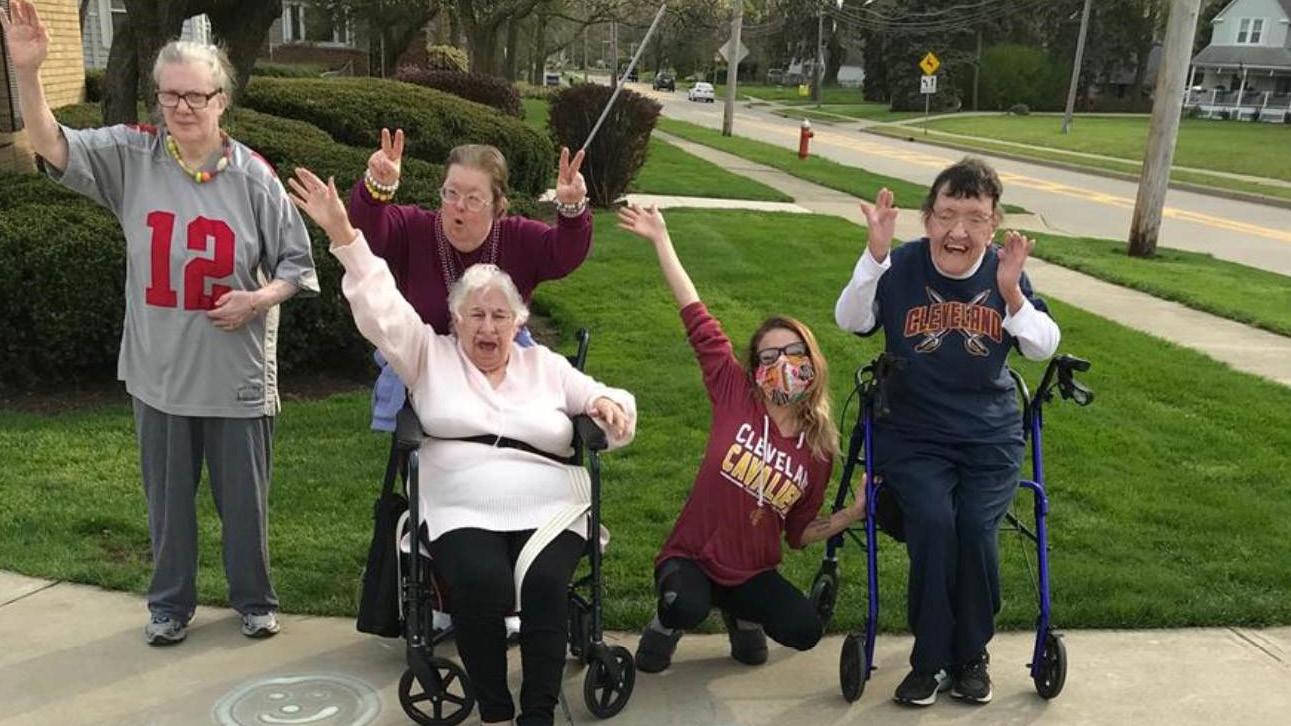









If the last two decades of the 20th Century could be likened to planting and growing a seedling, then the first two decades of the 21st Century can be best described as growing and tending a garden. Tending this garden was ANCOR’s new CEO, Renee Pietrangelo, who would helm the association until her retirement in 2014.
As with any successful garden, its strength and beauty are in its growth and diversity—with more members delivering a more diverse range of services to a more diverse array of people, ANCOR’s membership laid the groundwork for unprecedented influence. As such, the early 2000s were defined by new initiatives, new collaborations and new ways of working, empowered by technology and pregnant with possibility.
In 2003, for example, ANCOR became a founding member of the Alliance for Full Participation, which brought together 15 leading national disability organizations to collectively address barriers to expanding opportunities that empower people with disabilities to be included in their communities. ANCOR’s leadership within the Alliance would include convening two national summits, the first of which—held in 2005 with the theme, “Many Voices, One Vision”—attracted more than 3,000 participants.
In that same spirit of collaboration—and in recognition that some of the most meaningful lessons are those learned when looking beyond our own walls—ANCOR established its International Committee in 2015. Now known as the Global Council, ANCOR’s International Committee was born of the vision of two ANCOR
members, Charlie Hooker of Keystone Human Services and Rich Carman of Mosaic. Rich and Charlie understood that just as ANCOR could support the advancement of community disability services abroad, it could also learn much from how other countries insist on fully inclusive communities. Over the years, the Global Council has sponsored overseas educational trips in Romania, Latvia, Moldova, the Dominican Republic and more.
These efforts to learn from partners and peers at home and abroad have strengthened the ability of ANCOR members to cultivate inclusive communities. But just like how a garden can flourish when tended with care and compassion, so too can its growth be challenged by external factors—harsh climates, predators and the like. For ANCOR, the past 20 years have brought challenges that continue to threaten the long-term sustainability of community options and resources. Most notable among these challenges, of course, is the direct support workforce crisis.
It’s hard to pinpoint exactly when providers started experiencing substantial barriers to recruitment and retention, but by the middle of the first decade of the 21st Century, its effects were undeniable. Although National Core Indicators’ Staff Stability Survey—the most robust picture available of the scope of the workforce crisis—wouldn’t launch until 2014, ANCOR’s direct support professional (DSP) workforce surveys in 2008 and 2009 documented turnover rates approaching 40 percent. Our early research also documented wide discrepancies between wages paid to DSPs working in state-operated facilities and their counterparts in the private sector. These challenges were
proliferated primarily by Medicaid reimbursement rates that stagnated while the cost of supporting people plotted a steep upward trendline.
The direct support workforce crisis is one that continues to haunt our field today, but if the crisis has a silver lining, it is that many of ANCOR’s major accomplishments in the past 20 years have been the result of the association’s unrelenting focus on strengthening the workforce of professionals on the frontlines delivering services to people with I/DD.
In 2001, for example, ANCOR launched what became affectionately known as “the NAC,” the National Advocacy Campaign. This collaboration, which grew out of a convening of the chief executives of two dozen national disability organizations, coordinated and funded efforts to raise awareness of the workforce crisis and call attention to policy solutions that could stem the tide of high turnover.
Through the National Advocacy Campaign, ANCOR developed a series of important tools to equip advocates to raise the profile of the direct support workforce. These included public service announcements for radio and television, messaging toolkits that members could use in meetings with state and local officials, and more. These coordinated efforts would ultimately lead to the recognition of ANCOR’s commitment to addressing the direct support workforce crisis by the U.S. Department of Health & Human Services, which honored then-CEO Renee Pietrangelo with its Human Services Highest Recognition Award for Leadership Excellence.
The NAC would continue to exert influence throughout the first two decades of the 21st Century, most recently by serving as the inspiration for another campaign. Launched in 2017, Included. Supported. Empowered. was the ANCOR Foundation’s three-year
initiative to pull back the curtain on the important role providers play in making it possible for people with I/DD to thrive in the community. This $1.2 million effort reached hundreds of millions of people, telling the stories of the important roles providers and direct support professionals play in the community.

Launched in 2017, Included. Supported. Empowered. was a three-year, $1.2 million initiative designed to lift up the successes of people with intellectual and developmental disabilities and pull back the curtain on the important role providers play in bringing those successes to fruition.
During its three-year run, Included. Supported. Empowered. engaged hundreds of thousands of people online and in communities, earned placement in nearly 1,200 media outlets, and played an important role in helping the public understand what it means for people of all abilities to have the support they need to be empowered in their communities. The campaign wound down in 2020, but continues to fuel storytelling and awareness-raising initiatives across the country and in an array of virtual spaces.
The Included. Supported. Empowered. campaign was just one among many efforts to address the direct support workforce crisis, and it was made possible thanks to the dedicated commitment of the ANCOR Foundation, which itself found its roots at the turn of the century.
Founded in 2000, the ANCOR Foundation was incorporated as the 501(c)(3) charitable arm of ANCOR to fulfill a vision of exceptional leaders supporting inclusive communities. In the two decades since its founding, ANCOR has cultivated and celebrated leaders in the field of community-based I/DD services through a range of programs, including its Legacy Leaders Circle, Community Builder Award, the ANCOR Foundation Leadership Academy, the Renee L. Pietrangelo Leadership Forum and more. The ANCOR Foundation is also a founding co-sponsor of the semi-annual Leadership Institutes offered by the National Leadership Consortium on Developmental Disabilities.
Together, ANCOR and the ANCOR Foundation pioneered a number of programs designed to address the growing direct support workforce crisis. In 2007, for instance, ANCOR’s National Advocacy Campaign launched the Direct Support Professional of the Year Awards, recognizing nearly five dozen outstanding direct support professionals each year for their commitment to highquality supports. In 2008, at ANCOR’s behest, the U.S. Senate for the first time declared the second full week of September to be National Direct Support Professional Recognition Week, a now-annual tradition that by 2015 was marked by gubernatorial proclamations in 47 states across the US. And in 2010, ASAE—the country’s leading society for association professionals—named the National Advocacy Campaign to its Associations Advance America Honor Roll.
In large part, the direct support workforce crisis also inspired the creation ANCOR’s first-ever Political Action Committee. In 2017, the Board of Directors approved the formation of the ANCOR Disability Champions Political Action Committee (ANCOR DC PAC) to support congressional candidates championing legislative agendas that enhance community services and stabilize the direct support workforce. In 2020 alone, the ANCOR DC PAC was responsible for more than $18,000 in donations to members of Congress who have demonstrated their commitment to strengthening community-based disability services.
ANCOR’s full-scale attack on the direct support workforce crisis illustrates that responding to crisis is in our DNA. That our community has persevered despite significant challenges is a testament to our proven track record of transforming these crises into opportunities. This has been one of the defining features of the tenure of ANCOR’s fourth and current CEO, Barbara Merrill, who took the helm in 2014 after serving for two years as the association’s Vice President for Public Policy.
One of the catalysts ANCOR has leveraged to transform crises into opportunities has been its longstanding relationships with a range of key federal agencies, including the U.S. Departments of Labor (DOL), Health & Human Services, Housing & Urban Development (HUD) and Justice.
Building on Joni Fritz’s deep expertise in wage and labor laws, ANCOR advocated to secure a delay in the compliance deadline for the Obama administration’s Home Care Rule and to ensure the use of data validated by independent third parties. In turn, ANCOR’s efforts successfully resulted in the longest implementation period ever provided for a proposed DOL rule, as well as industry-first guidance for host home and shared living providers. Then, in 2018, in response to ANCOR’s Save Our Services campaign, ANCOR delivered victory once again by
positioning community providers as one of only two employer groups in the entire country to receive special accommodation under the Overtime Rule’s exempt employee salary threshold regulation.
Beyond advocating for the creation of sensible public policy, another north star in ANCOR’s work has been supporting members to adapt to new policies and regulations—especially when the evolving needs of our members meet the brutal headwinds of crisis. This includes being at the forefront to the Technology First movement with the promotion of cuttingedge technology advancements that promote independence. It includes partnering with the Department of Labor’s Office of Disability Employment Policy to assist providers transitioning from facility-based employment programs to competitive, integrated employment. And, it includes creating a Business Acumen Resource Center funded under a grant from the Administration on Community Living to build the capacity of providers to be more sustainable and to adapt to shifts toward integrated and managed care.
In 2017, ANCOR’s resilience was tested once again when an effort by Congress to repeal the Affordable Care Act threatened the uncapped federal Medicaid program. In response, ANCOR sprang into action, mobilizing tens of thousands of advocates to email and call their members of Congress, participate in rallies in front of the Capitol and tell stories of what community I/DD services mean to them and their loved ones. The effort was successful in achieving its intended outcome of thwarting the effort to dismantle Medicaid, but the campaign had an unforeseen positive impact as well: more Americans than ever before finally understood what Medicaid does for people with disabilities.
This awareness—among the public and among lawmakers— provided an incredibly helpful foundation just three years later
when ANCOR and its network of providers were faced with perhaps their biggest crisis yet: COVID-19. In the spring of 2020, providers across the country were devastated by a global pandemic that, at the time of this publication, is still ongoing. Day programs and supported employment programs were forced to shut down to abide by public health orders demanding people stay at home, while people living in group homes and other residential settings found it difficult and sometimes impossible to socially distance. Meanwhile, with the shortage of direct support professionals more significant than ever, providers began seeing DSPs leave the field in droves—to care for loved ones who contracted the coronavirus, to care for children whose schools were now shuttered, or out of fear that they themselves would get sick and potentially die simply for going to work.
Once again, ANCOR members shined a light in a moment of darkness and uncertainty. Tens of thousands of advocates tweeted at their members of Congress, jammed the Capitol switchboards, wrote emails to their governors and more, all to illustrate the severe impact the COVID-19 pandemic was having on providers’ ability to keep those they support isolated from the deadly virus. The results of these efforts are too numerous to name, but they included securing hundreds of billions of dollars in emergency relief from the federal government and a range of regulatory flexibilities, some of which would go on to become permanent and positively reshape the delivery of quality I/DD services.
If there is a common thread in each of these crises, it is that our record of being an association of providers dedicated to improving the lives of people with disabilities has earned us deep credibility with Congress, the White House, federal agencies, policymakers, researchers, the press, and national associations representing self-advocates, families and payers. This dynamic




can be attributed to the thought leadership of ANCOR and its members and our commitment to navigating the constructive center to ensure that policymakers understand how legislation and regulations are translated into practice that has real impacts in the lives of real people.
Central to that thought leadership is the pairing of data and solutions to move the needle on some of our field’s most pressing challenges. For example, in 2019, ANCOR partnered for the first time with United Cerebral Palsy (UCP) to release the Case for Inclusion. Published annually by UCP since 2006, the Case for Inclusion offers a comprehensive look at how well state programs are supporting people to be included in the community, recognizing that high-quality data are key to understanding the nuances of the problems before us in a deep and meaningful way.
With the right data in hand, we can offer constructive solutions. Consider, for instance, the economic challenges associated with high turnover in the direct support workforce. One way to address these challenges would be to increase the resources providers can access, while another would be to help minimize costs that don’t directly enhance the lives of the people we support. As an organization that always favors the both/and over the either/ or, ANCOR has devised solutions that address both sides of the equation.
In the policy arena, this has involved advocating for more thorough engagement of community providers in the development of federal regulations, such as the HCBS Settings Rule or the U.S. Department of Labor’s Overtime Rule. And, when it comes to community practice, this means establishing partnerships with a number of leading providers of products and services, all with the understanding that when ANCOR aggregates demand, the cost savings can be passed directly to providers. This has been the
driving influence behind ANCOR’s Shared Resources Purchasing Network—first launched in 2007—as well as the association’s existing corporate partnership program, which includes more than two dozen Gold, Platinum and Diamond Partners.
A linchpin to each of these successes has been the association’s positioning in what we often refer to as the “constructive center.” Throughout our history, we have understood that the status quo is never good enough. At the same time, we recognize that the progress we envision is monumental, and the factors that make change difficult are rooted in the specific needs of and obstacles facing people with I/DD, their families and their communities. ANCOR has always adapted to this tension by actively listening to the concerns of providers across the spectrum and putting what we learn to work in service of sensible solutions that at once acknowledge the challenging work happening on the ground while also pushing the envelope.
That tendency—to listen to others, to celebrate their contributions and to push the envelope nevertheless—is perhaps the best way to describe where we are as an association now, and how we plan to get where we’re going. Nimble, tenacious, and perhaps even a little scrappy, these dimensions of our DNA are what remind us each and every day that when we band together, there’s no limit to what ANCOR members can make happen.

Our Mission at a Critical Moment, 2021 and Beyond
Throughout the preceding sections of this document, we have identified many of the dimensions of our DNA that have helped nurture our movement and grow our legacy. We’ve highlighted how building coalitions and collaborating with others have been central to our influence in Washington and beyond. We’ve walked through a rich history of cultivating and elevating leaders and how these leaders have in turn stepped up on behalf of the civil rights of people with disabilities. And, we’ve illustrated the ways in which lifting up voices can lift up creative solutions that improve the options and resources available to people with disabilities to live a life of their choosing.
Underlying each of these dimensions of our history is one other through line that has been tested more in the past two years than ever before: the resilience of the members of our community.
As we are often reminded in times of trial and tribulation, the COVID-19 pandemic has once again reinforced for us that through tempests dark and wild, community providers find ways to step up and rise to the occasion. Since the beginning of 2020—the last year of ANCOR’s first half-century—I/DD providers have seen it all. From coronavirus outbreaks in congregate care settings to the full-scale closure of day programs for months on end, the pandemic has threatened the very existence of communitybased providers of I/DD services.
These challenges have been a sharp reminder that even houses built on the strongest foundations can be battered in tumultuous times. Even this very document speaks to the need for all of us to be nimble in the face of the uncertainty spawned by the
pandemic; intended as a retrospective on ANCOR’s first 50 years, it was finally published more than 51 years after the association’s founding.
To be sure, ANCOR members didn’t scrape by unscathed. Most were forced to discontinue services—some permanently—while many are supporting fewer people now than they were in 2019.
To meet the fiscal demands of staff overtime, personal protective equipment and more, providers have had to spend hundreds of thousands and sometimes millions of dollars annually to sustain just basic operations. And, in just about every community in every state in the nation, the pandemic has amplified substantially an already out-of-control workforce crisis.
Nevertheless, like we always do, we rose to the occasion.
For every person with a disability who tested positive for COVID-19, there was a direct support professional there, eager to shelter in place so the people to whom they dedicate their life’s work would have the support needed to recover fully and safely. For every house manager who was forced to make the impossible choice of leaving the workforce to be home with their kids whose schools were shuttered, there was a displaced supported employment specialist ready to jump feet first into a job with which they were largely unfamiliar. And for every home that needed support where none was available, there was a finance director or CEO willing to overlook their own exhaustion to pick up shifts and ensure no one in need of support found themselves alone.
Looking at the picture through this frame, we see a story of resilience: the resilience of people living with an intellectual or developmental disability, the resilience of direct care workers, the resilience of provider agency staff at all levels. But if you reorient yourself to look through the frame from a different angle, there’s another story to be told—one that reminds us that it doesn’t have to be this way.
If there has been any silver lining to come of the pandemic, it has been the broader recognition of community-based disability services and the realization that there is a wide gulf between the way things are and the way things should be. Just like our fight to protect the Affordable Care Act in 2017 taught millions of Americans for the first time the difference the Medicaid program makes in communities across the country, so too did the COVID-19 crisis call the attention of elected officials to longterm underinvestment in community services and the havoc that underinvestment has wreaked in the lives of some of our most vulnerable neighbors.
This recognition can be seen in several key public policy initiatives proposed or passed since the dawn of the pandemic. For example, the CARES Act of 2020—one of several COVID-19 relief packages—authorized $175 billion to establish a Provider Relief Fund, with tens of billions of dollars being allocated to Medicaid providers since the summer of 2020, thanks in part to advocacy by ANCOR and its members. Another such COVID-19 relief package, the American Rescue Plan, included a oneyear, 10-percent increase in the matching rate that the federal government uses to supplement states’ investments in Medicaid.
These investments in the sustainability of community-based providers have been the most significant to date in the history of the Medicaid program. However, they may soon be eclipsed by yet another historic milestone. In 2021, just a few months after
President Joe Biden was inaugurated, the White House proposed a $400 billion investment in the Medicaid Home and Community Based Services program.
In addition to unprecedented increases in federal spending on Medicaid services, the legislation that would later become known as the Better Care Better Jobs Act would stabilize the direct support workforce by compelling states to increase provider reimbursement rates to ensure competitive wages for direct support professionals. At the time of this writing, the proposal is still being debated in Congress as part of broader negotiations on President Biden’s Build Back Better Agenda. Nevertheless, the mere fact that the President of the United States proposed a nearly half-trillion-dollar investment in Home and Community Based Services suggests that we’re light years ahead of where we were just a few short years ago when it comes to awareness of and political will to address the direct support workforce crisis.
And, above all, we now know what it will take to sustain our optimism that the road ahead is bright. Providers’ proven resilience, plus lawmakers’ demonstrated interest in shoring up the community-based disability services system and the workforce that makes it run, make us more confident than ever about the future of our community and the people that drive us to do more and do better, each and every day.
So what does this all mean for ANCOR’s next 50 years? Frankly, it’s hard to imagine all that will be possible given the growth, strength and resilience this community has built over the last 50 years.
But there are at least a few things we know for certain.
We know, for instance, that the pivot away from institutionalization that started this movement in the first place remains firmly

planted, with more recognition than ever that all people deserve to have choices about where they live, and the support they need to pursue those choices without pause.
We know that we’re just scratching the surface when it comes to ensuring that all people have the support they need to guarantee a meaningful day, each and every day. Whether it’s supporting people to find and create a sense of community, to build pathways to seek and sustain employment, or to feel a sense of purpose upon retirement, we know that the progress we’ve seen in this arena over the last half-century is growing exponentially.
We also know that truly inclusive communities don’t just mean people can go out into the community—something most of us take for granted. Rather, truly inclusive communities are those where people of all abilities are empowered to be engaged wherever they find community. Whether this means volunteering with local organizations, connecting or reconnecting with new friends or long-lost relatives, casting ballots and mobilizing others to vote, or any number of other possibilities, we know that the next 50 years will be defined by efforts to ensure people aren’t just in the community, but engaged in the community.
And, speaking of engagement, we know that our vocabularies about self-determination and self-advocacy remain in their infancy. Fifty years ago, it would have been hard for a lot of people with I/DD to imagine having the support needed to make choices about where they live, whom they live with or what their days look like. Now, it’s not uncommon for people to direct their own services, hire (and fire) staff, play lead roles in their own legal affairs and more. If the past 50 years have been about laying a foundation to make those victories possible, the next 50 years will be about pushing to the limit our assumptions about what can happen when people with even the most significant disabilities are supported in whichever communities they choose to be a part of.
And all of what we know leads us to one other truth: as it turns out, we’re just getting started. We’ve planted the seeds for a movement to grow, and our garden is undoubtedly thriving. But we’re not just here to grow a garden—we’re here to fundamentally transform the landscape.
Ambitious as it may be—ambitious as it always has been—we know this vision will continuously evolve into reality, and that’s because of you. We’re humbled to have you as part of our community, and will forever be grateful that you’ve chosen to be an important part of ANCOR’s story.



1970-1974
Manford A. “Manny” Hall
1975-2000
2000-2014
Joni Fritz 2014-present
Renee L. Pietrangelo
1970-1971
Albert “Spud” Schmickel
New England Village, Inc. Pembroke, MA
1971-1974
Don A. Boyer Handicap Village, Inc. Clear Lake, IA
1974-1976
John C. McIvor
Cedars Development Foundation of Marin Ross, CA
1976-1978
Patrice Schmitz Hall Lakemary School Paola, KS
1978-1981
Terry A. Perl
Chimes International Baltimore, MD
1981-1984
Stephen Bennett
United Cerebral Palsy Van Nuys, CA
1984-1985
Paul S. Kurtz
Hattie Larlham Foundation Mantua, OH
1985-1990
J. Gary Mattson
Exceptional Persons, Inc. Waterloo, IA
1990-1994
Peter “Skip” Sajevic Nekton-Norhaven St. Paul, MN
1994-1998
Bonnie-Jean Brooks OHI Hermon, ME
1998-2002
Than Johnson Champaign Residential Services, Inc. Urbana, OH
2002-2006
Fred Romkema
Northern Hills Training Center Spearfish, SD
2006-2010
Peter Kowalski
John F. Murphy Homes Auburn, ME
2010-2012
Wendy Swager Soreo Tucson, AZ
2012-2014
David Toeniskoetter Dungarvin Mendota Heights, MN
Barbara Merrill
2014-2016
Christopher Sparks Exceptional Persons, Inc. Waterloo, IA
2016-2018
Angela King Volunteers of America Texas Euless, TX
2018-2020
Robert Budd
Family Residences & Essential Enterprises, Inc. Old Bethpage, NY
2020-2022
Heidi Mansir Uplift, Inc. Gardiner, ME
2007
Larry Skinner KETCH Wichita, KS
2008
Mike Garcia
Catholic Community Services Tucson, AZ
2009-2010
Darlene Ricco Dungarvin Carson City, NV
2011
Gina Bartlow Twin Rivers Associates Stratham, NH
2012
Lynda DiPressi New Horizons Resources
Pleasant Valley, NY
2013
Rosie Moriarty Dakota Communities Eagan, MN
2014
Stephanie Boyle The Arc of Spokane Spokane, WA
2015
Alex Andrews Imagine! Lafayette, CO
2016
Josh Alford Independent Opportunities Somerset, KY
2017
Forrest Austin Johnson County Developmental Supports Lenexa, KS
2018
Leroy Bryant Dungarvin Gallup, NM
2019
Antoinette Morris Trinity Services Des Plaines, IL
2020
Eligio Velasquez ARCA
Albuquerque, NM
2021
William Pate Dungarvin Indianapolis, IN
2016
Mark Davis Ohio Provider Resource Association Columbus, OH
Daryn Demerrit BrightSpring Health Services Louisville, KY
Ben Shaiken Connecticut Community Nonprofit Alliance Hartford, CT
2017
Josh Evans IARF Springfield, IL
2017 (cont.)
Heidi Mansir Uplift, Inc. Gardiner, ME
2018
Gary Blumenthal PAR Harrisburg, PA
Ravi Dahiya YAI
New York, NY
Chris Sparks Exceptional Persons, Inc. Waterloo, IA
Lizette Stiehr Alaska Association on Developmental Disabilities Anchorage, AK
2020
Yadira Holmes
Consumer Direct Care Network
Missoula, MT
Caroline Meehan Community Provider Association
New Orleans, LA
2019
Kristen Farry Woods Services Langhorne, PA
Esmé Grewal ANCOR Alexandria, VA
Than Johnson Champaign Residential Services, Inc. Urbana, OH
Stan Soby Oak Hill Hartford, CT
2020
Lori Kress Dungarvin Mendota Heights, MN
Mark Matulka Mosaic Omaha, NE
Matt Sturiale
Birch Family Services
New York, NY
2021
Ann Hardiman
New York Alliance for Inclusion & Innovation Albany, NY
Lynne Megan TSE, Inc. Roseville, MN
2021
Amy Staed Kentucky Association of Private Providers
Danville, KY
Christine Touvelle
Ohio Provider Resource Association Columbus, OH
2020
Debbie Jenkins
Ohio Health Care Association
Lewis Center, OH
2021
Shelly Chandler
Iowa Association of Community Providers
Des Moines, IA
Congressional Champion Award
2017
The Honorable Bob Casey
U.S. Senator from Pennsylvania
The Honorable Susan Collins
U.S. Senator from Maine
The Honorable John McCain
U.S. Senator from Arizona
The Honorable Lisa Murkowski
U.S. Senator from Alaska
2018
The Honorable Brett Guthrie
U.S. Representative from Kentucky
The Honorable Jim Langevin
U.S. Representative from Rhode Island
2019
The Honorable Debbie Dingell
U.S. Representative from Michigan
The Honorable Rob Portman
U.S. Senator from Ohio
2020
The Honorable Joni Ernst
U.S. Senator from Iowa
The Honorable Maggie Hassan
U.S. Senator from New Hampshire
2021
The Honorable Bob Casey
U.S. Senator from Pennsylvania
2010
Bonnie-Jean Brooks OHI Hermon, ME
Frank Capone Liberty ARC Amsterdam, NY
Richard Carman Mosaic Omaha, NE
Tom Daniels Faith, Hope & Charity Storm Lake, IA
Emily Ennis Fairbanks Resource Agency Fairbanks, AK
Joni Fritz ANCOR Alexandria, VA
Ann Hardiman
New York Alliance for Inclusion & Innovation Albany, NY
Charles Hooker III Keystone Human Services Harrisburg, PA
Diane Iagulli Delta Projects Dedham, MA
2010 (cont.)
Charlene Kinnelly Uplift, Inc. Gardiner, ME
Steve Lesko Hope Community Services Anchorage, AK
Thomas Lewins New Avenues to Independence Cleveland, OH
Ken Lovan BrightSpring Health Services Louisville, KY
Cindy Mahan
Friendship Community Care Russellville, AR
Patti Manus Rainbow of Challenges Hope, AR
Lynne Megan TSE, Inc. Roseville, MN
Carol Mitchell Verland Sewickley, PA
Gary Mrosko
Opportunity Village Clear Lake, IA
2010 (cont.)
Terry Perl
Chimes International Baltimore, MD
James Pierce Independence Association Brunswick, ME
Jim Richardson Cedar Lake Louisville, KY
Fred Romkema Northern Hills Training Center Spearfish, SD
Peggy Schneider Independent Living Services Conway, AR
Thomas Scheinost Community Support Providers of South Dakota Spearfish, SD
Nancy Silver Hargreaves WCI Waltham, MA
Rita Taunton Community Living Services El Dorado, AR
2011
Dan Berkowicz
New Hope Community Loch Sheldrake, NY
Dennis Felty Keystone Human Services Harrisburg, PA
Amy Gerowitz Ohio PATHS Program Columbus, OH
Than Johnson Champaign Residential Services, Inc. Urbana, OH
Peter Kowalski
John F. Murphy Homes Auburn, ME
J. Gary Mattson Exceptional Persons, Inc. Waterloo, IA
Renee Pietrangelo ANCOR Alexandria, VA
John Rose Liberty ARC Amsterdam, NY
2011 (cont.)
Julian Streett
Community Resources Network
Little Rock, AR
Larry Weishaar
BrightSpring Health Services Louisville, KY
2012
Gale Bohling
BrightSpring Health Services Louisville, KY
Richard Farnsworth Woodfords Family Services Westbrook, ME
Suellen Galbraith ANCOR Alexandria, VA
David Ray Kiely Silver Fox Advising South Bend, IN
Kathy LeMay
Dakota Communities Eagan, MN
Dennis Popp
Black Hills Training Center Rapid City, SD
Tim Quinn
The Arc Northern Chesapeake Region Aberdeen, MD
2012 (cont.)
Terry Rogers
CHESCO Services Chesterfield, SC
2013
Cecil Fox Chimes International Baltimore, MD
Jeff Gardner
Ark Regional Services Laramie, WY
Wayne Larson
Mt. Olivet Rolling Acres Chanhassen, MN
John McGee
Community Alternative Service Systems Omaha, NE
Timothy Nelson Hammer Residences Wayzata, MN
William Repicci
Lymphatic Research Foundation Glen Cove, NY
Aase Righter
Camphill Village USA
Copake, NY
David Ruppell
Perspectives Corporation North Kingstown, RI
2013 (cont.)
Thomas Wilds
St. John’s Community Services
Washington, DC
2014
Jim Blume
Developmental Services of Northwest Kansas Hays, KS
Christine Collins Alliance Denver, CO
Jim Hammond INARF Indianapolis, IN
Patrick Johnson Oak Hill Hartford, CT
Bob Laux Wild River Realty Bethel, ME
Costa Miller INARF Indianapolis, IN
Wendy Swager Soreo Tucson, AZ
2015
Ron Cohen
UCP of Los Angeles, Ventura & Santa Barbara Counties
Woodland Hills, CA
2015 (cont.)
Erwin Freidman
National Children’s Foundation
Washington, DC
Diane McComb
DelMarVa Consulting Services
Salisbury, MD
Kathy Meath
St. Louis Arc
St. Louis, MO
Regis Obijiski
New Horizons Resources Pleasant Valley, NY
Bill Tapp College of Direct Support Knoxville, TN
David Toeniskoetter Dungarvin Mendota Heights, MN
Shirley Walker PAR Harrisburg, PA
2016
Regis Champ Allegheny Valley School Erdenheim, PA
Maureen Corcoran
Ohio Provider Resource Association
Columbus, OH
2016 (cont.)
Tim Kral Oregon Resource Association Salem, OR
Marty Lampner Chimes International Baltimore, MD
Dan Rosen D. Rosen Associates New York, NY
Karin Stockwell Dungarvin Mendota Heights, MN
Janet Stover IARF Springfield, IL
2017
Mark Davis Ohio Provider Resource Association Columbus, OH
Daryn Demeritt BrightSpring Health Services Louisville, KY
Judy Goodwin Oklahoma Community-Based Providers Oklahoma City, OK
Ann Moffitt Keystone Human Services Harrisburg, PA
2017 (cont.)
Bruce Nelson Association for Residential Resources in Minnesota South St. Paul, MN
Chris Sparks Exceptional Persons, Inc. Waterloo, IA
Greg Wellems Imagine! Lafayette, CO
Donna Werner Mosaic Omaha, NE
2018
Carole Beatty
Maryland Department of Disabilities Annapolis, MD
Rob Braun Christian Opportunity Center Pella, IA
Robert Budd Family Residences & Essential Enterprises, Inc. Old Bethpage, NY
Michael Hutcherson Rose & Kiernan East Greenbush, NY
John Severtson One Vision Clear Lake, IA
2018 (cont.)
R. Chris Stevenson Cedar Lake Louisville, KY
Tim Sullivan
Aspire Living & Learning Concord, NH
2019
Robert “Bob” Baker Keystone Human Services Harrisburg, PA
Paula Hart Volunteers of America Minnesota & Wisconsin Minneapolis, MN
Naomi “Deane” Ruppert Emmaus Homes St. Charles, MO
2020
Arthur Ginsberg CRi Chantilly, VA
Jan Hannah Community Living Concepts Keene, TX
Richard Hernandez BrightSpring Health Services Louisville, KY
Cindy Kauffman SEEC Silver Spring, MD
2020 (cont.)
Angela King Volunteers of America Texas Euless, TX
2021
Gary Blumenthal InVision Human Services Wexford, PA
William “Bill” Loyd, Jr. University of Iowa REACH Iowa City, IA
Julie Manworren Volunteers of America Minnesota & Wisconsin Minneapolis, MN
2004
Norcom Community Center Philadelphia, PA
2005
Wilderness Inquiry St. Paul, MN
Zuni Entrepreneurial Enterprises Gallup, NM
2006
Dakota Communities Eagan, MN
The Town of Littleton Littleton, NH
President’s Award
2013
David Braddock Coleman Institute for Cognitive Disabilities Boulder, CO
2007
Options Day Service Program Lenexa, KS
Region Ten Quality Assurance Commission Rochester, MN
2008
KFI Maine Millinocket, ME
State Senator Cynthia Nava Albuquerque, NM
2009
City of Eugene Adaptive Recreation Program Eugene, OR
Pieters Family Life Center Rochester, NY
2011
Andrea Schaefer Barefoot Dance Studio Rapid City, SD
Pathway Program at UCLA Los Angeles, CA
2012
Hope House Foundation Community Support Program Norfolk, VA
2013 Kiwanis International’s Aktion Clubs Indianapolis, IN
2021
Mickey Mart Milan, OH
2014
Charlie Lakin
National Institute for Disability & Rehabilitation Research Minneapolis, MN
Clarence Sundram
U.S. District Courts Delmar, NY






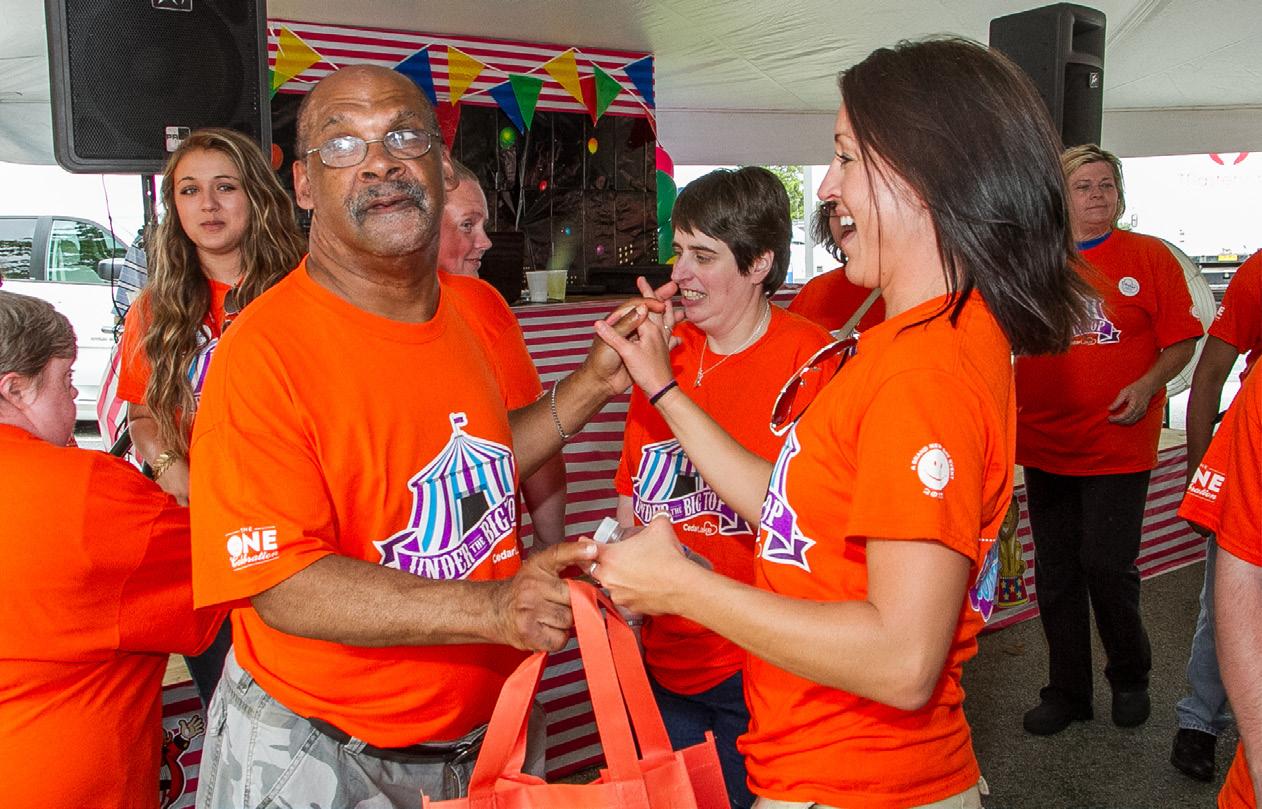
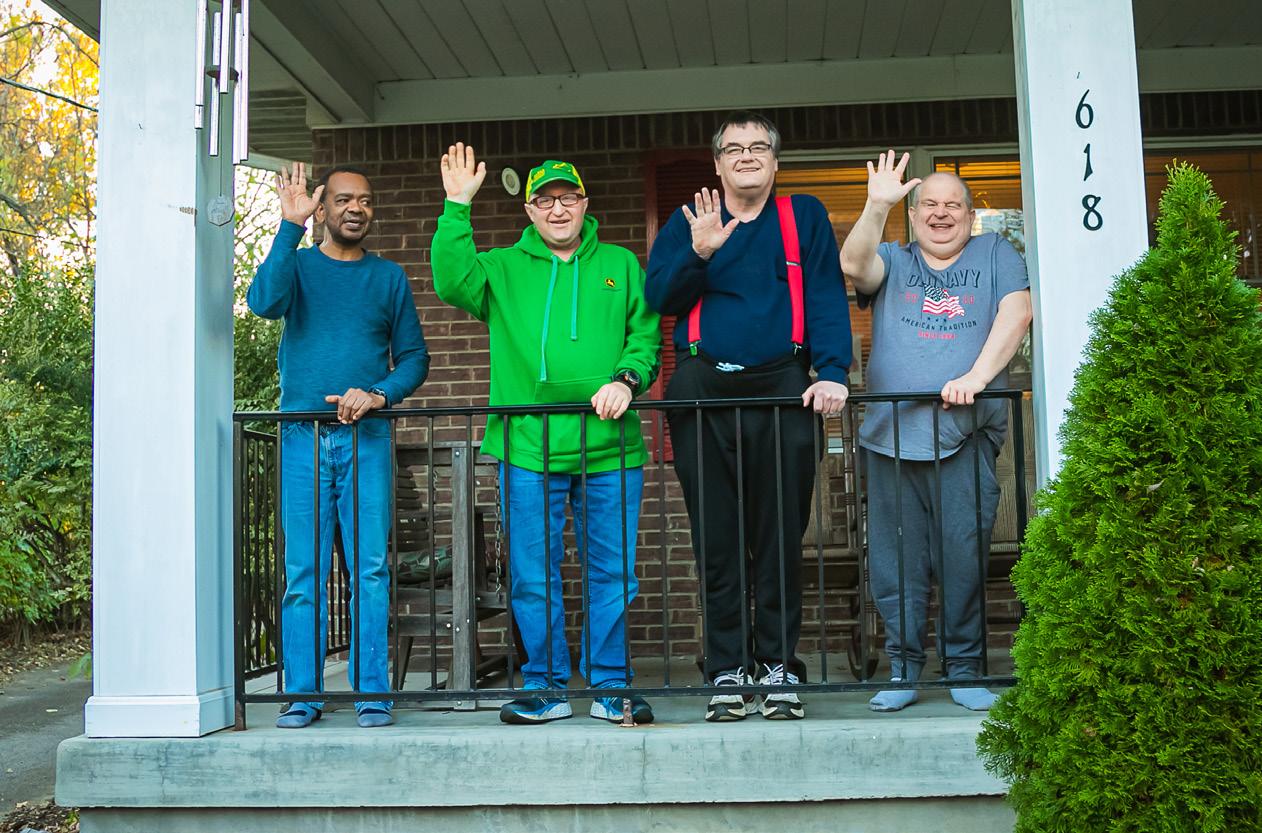

ANCOR extends its deepest gratitude to ANCOR’s third CEO, Renee Pietrangelo, who served as the lead author for this publication and who spent countless hours interviewing current and former ANCOR members to help shape this historical retrospective. We would also be remiss if we didn’t acknowledge three members of ANCOR’s staff for their significant contributions to the development of this historical retrospective: Barbara Merrill, Chief Executive Officer; Gabrielle Sedor, Chief Operations Officer and Foundation Director; and Sean Luechtefeld, Senior Director, Communications.
We are also deeply appreciative of Bonnie-Jean Brooks, who contributed her institutional knowledge and personal photographs to this effort. Finally, we also wish to extend our gratitude to Roberto Arjona, who crafted the beautiful visual design for this publication.

For more than 50 years, the American Network of Community Options and Resources has been a leading advocate for the critical role service providers play in enriching the lives of people with intellectual and developmental disabilities (I/DD). As a national nonprofit trade association, ANCOR represents 1,800+ organizations employing more than a half-million professionals who together serve more than a million individuals with I/DD. Our mission is to advance the ability of our members to support people with I/DD to fully participate in their communities.